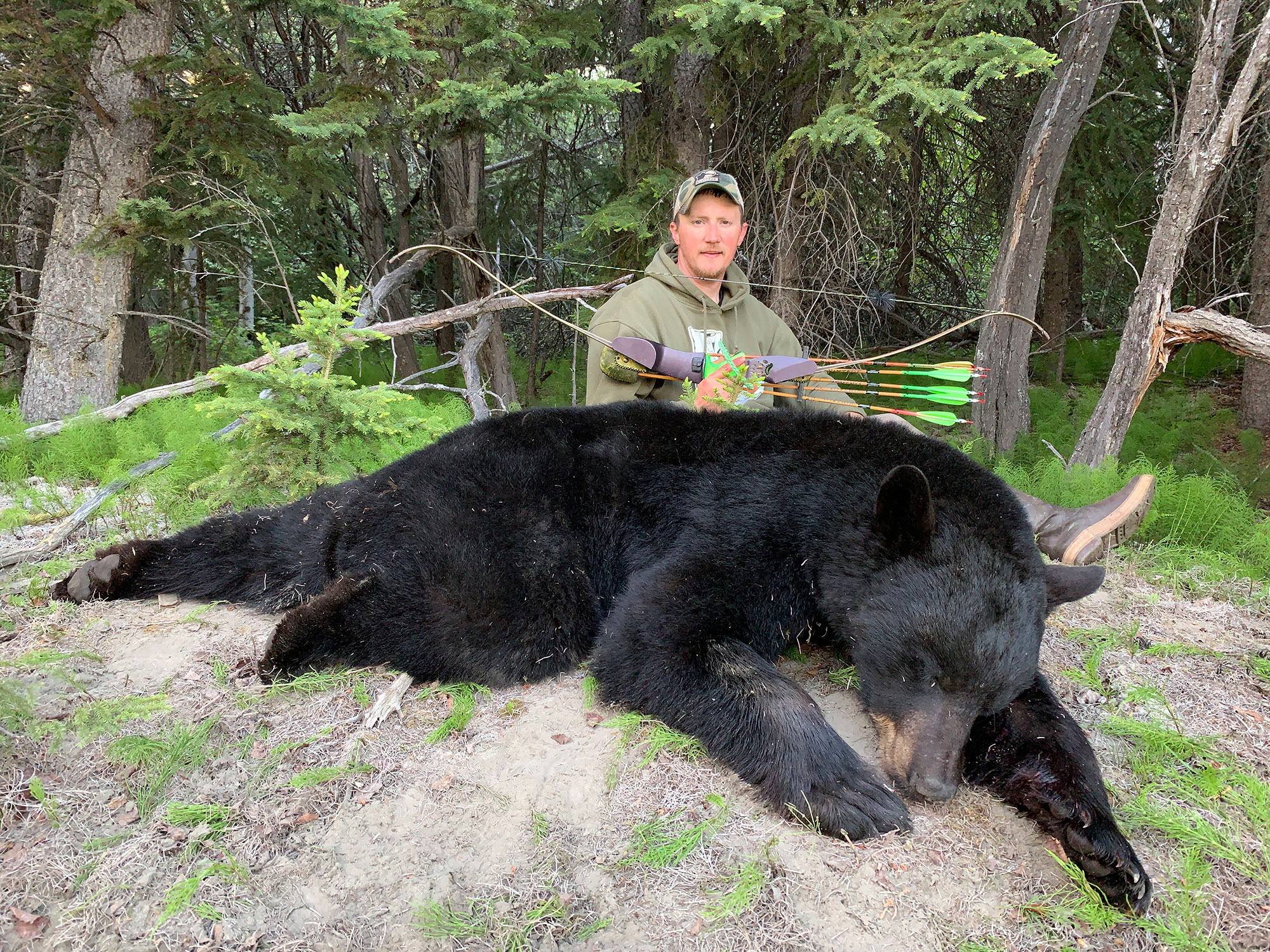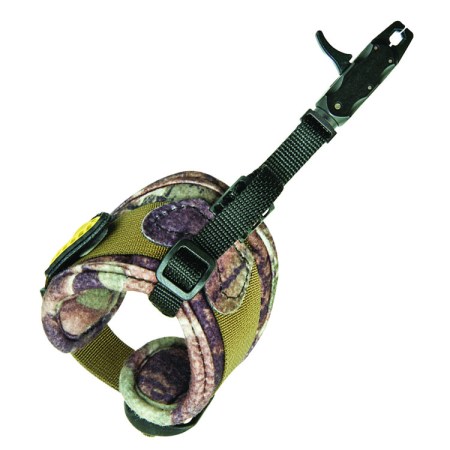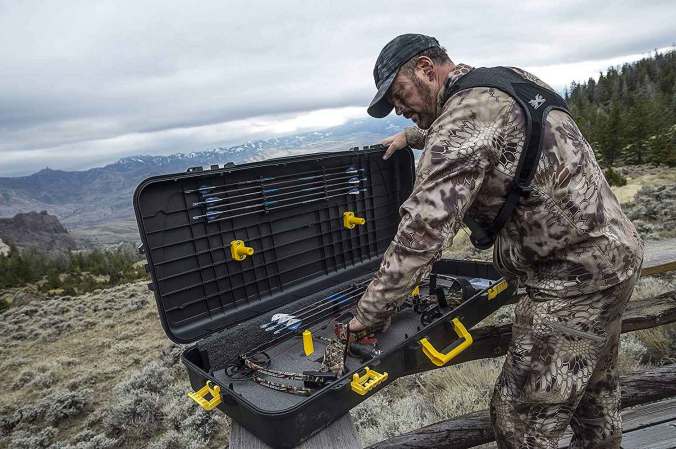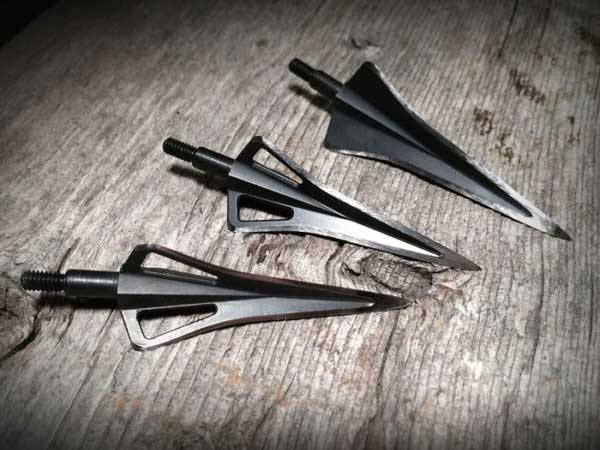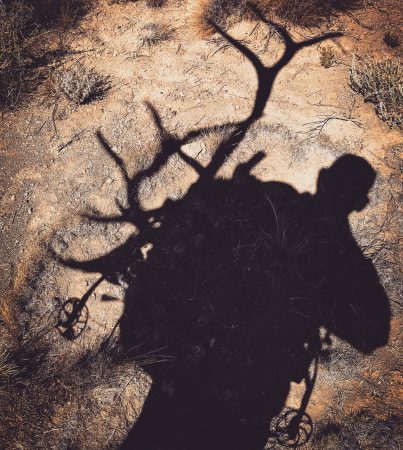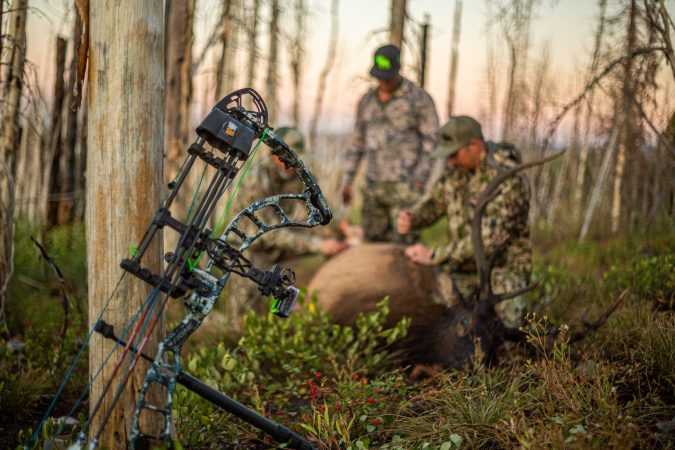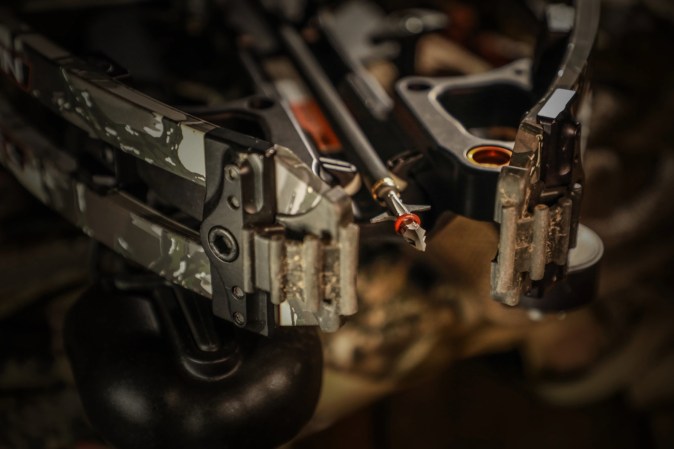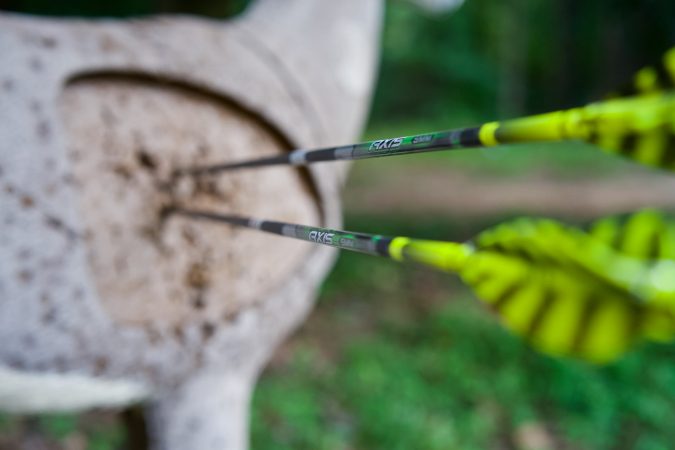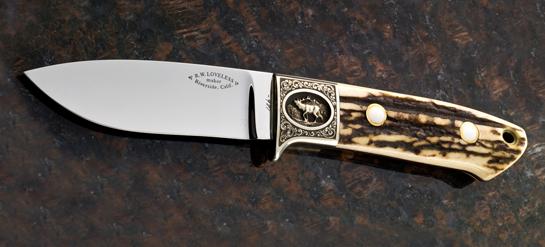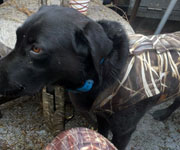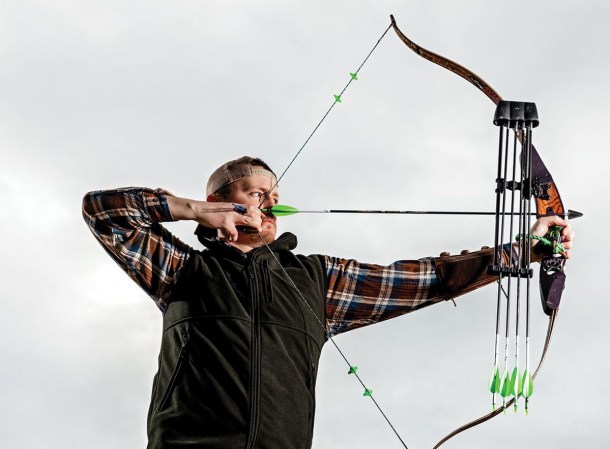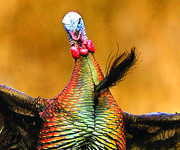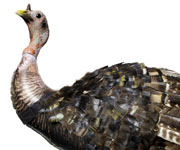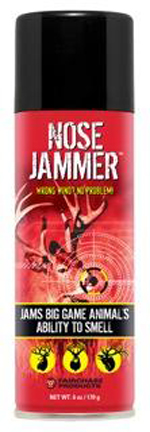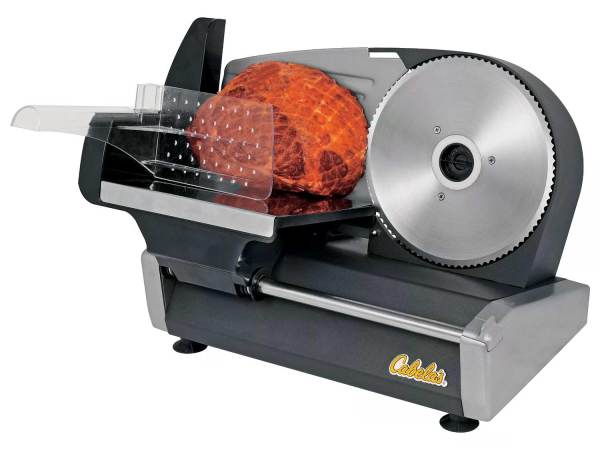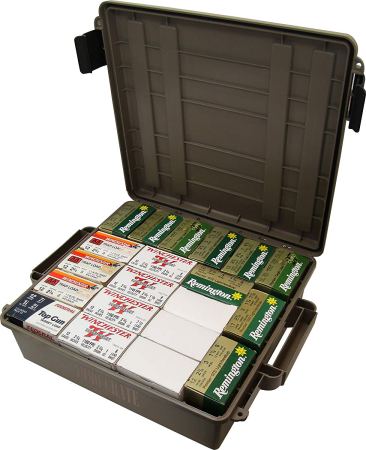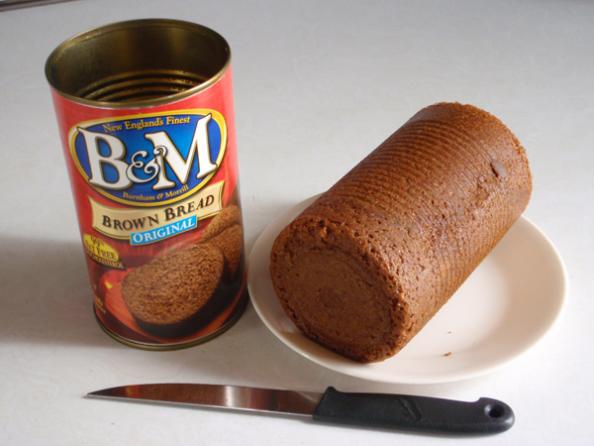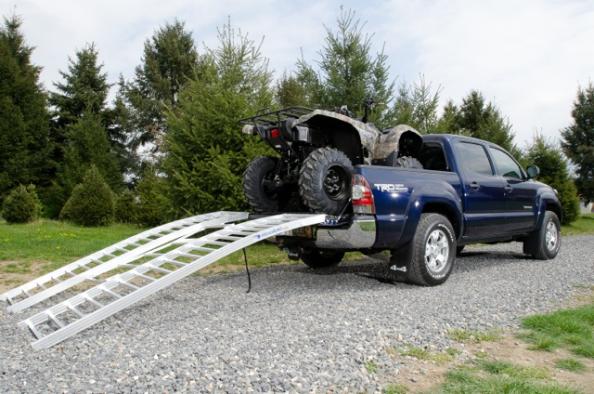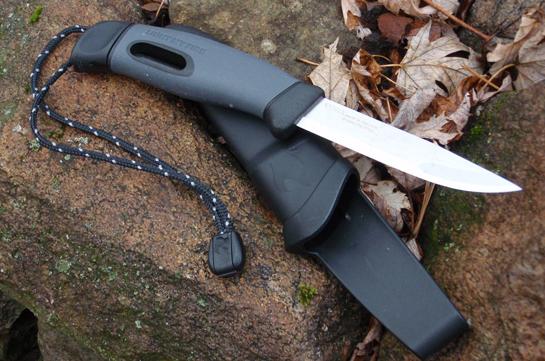We may earn revenue from the products available on this page and participate in affiliate programs. Learn More ›
If you’ve been paying attention to the archery hunting world, you’ve likely noticed that some perceptions are beginning to change around arrow weight and broadhead construction. I think that’s a good thing (I’ve been promoting shooting heavy arrows and durable two-blade broadheads for years). So I like that concepts like F.O.C. (front-of-center balance point), arrow weight, and heavy-duty broadheads are becoming more popular. Many bowhunters are realizing a deadlier setup isn’t about just maximizing speed. The whole point of this trend is to construct a hunting arrow that will penetrate deeper — and even through heavy bone — than lighter arrows with less efficient broadheads.
It all boils down to basic physics plus empirical evidence, much of which is sourced in the works of Dr. Ed Ashby.
Dr. Ashby’s arrow penetration and lethality studies have been around for a long time. He has made guest appearances on several podcasts, including Kifarucast, Journal of Mountain Hunting’s Beyond the Kill, and most recently Episode 284 of The Meateater Podcast. Although you probably aren’t likely to find a variety of heavy single-bevel broadheads and components for building high-F.O.C arrows at your average local sporting goods store, these concepts are being talked about much more frequently. I tend to agree with a lot of what Dr. Ashby has to say, which is basically that heavier, slower, high-FOC arrows tipped with durable, single-bevel broadheads are much more lethal than lighter, faster arrows tipped with mechanical heads.
I firmly believe that many of these concepts can help us build a more forgiving and lethal arrow, even when it comes to penetrating heavy bone. But remember: they’re still only arrows. A high F.O.C., tapered shaft, that’s tipped with a single-bevel broadhead won’t turn your bow into a .30-06. Creating a better-penetrating arrow certainly allows you more room for error in shot placement and a more lethal arrow can increase your ethical shot angles on some animals, but it doesn’t give you license to throw everything you know about shot selection (and being able to make the shot) out the window.
As with any popular gear trend that supposedly helps increase effectiveness, there’s often a tendency for people to get sucked so far into the details that they forego everything else. Like the naivety of believing that a specific rifle cartridge or camo print is what is going to make you more successful, many are eager to jump on the bandwagon of concepts like heavy, weight-forward arrows, without giving equal attention to even more important fundamentals. In the case of Dr. Ashby’s findings on arrows, people hear things like “heavy bone threshold” and F.O.C. percentages and sometimes forget that shot placement is still the single most important element for a clean archery kill.
It’s easy to get drawn into the statistics and details, and frankly, sometimes it’s fun to focus on the specifics of our gear. Putting forth our best effort to make our arrows as effective as we can (whether you subscribe to Dr. Ashby’s ideas on the subject or not) is a good thing, but not at the sacrifice of everything else.
I’m sure at least a few people heard Dr. Ashby on The Meateater Podcast, and immediately went out and ordered heavier arrows and broadheads, because they’re better, right? Maybe, but only if that person already understands the principles of tuning their bow and arrows and can shoot their rig accurately. Hunters often want to be able to fix issues by buying new equipment, but that’s usually not the best immediate answer. Most bowhunters would see a greater leap in their effectiveness with a good tune and a lot of practice than they would by simply switching to heavier arrows and broadheads.
Read Next: Killing a Grizzly the Old-Fashioned Way: With a Longbow and a Stone-Point Arrowhead
Even Dr. Ashby is very specific in adding that his testing is all done with well-tuned arrows that are flying perfectly, but those details sometimes don’t register. A person needs to understand the intricacies of how their current equipment performs in order to see a significant gain from something new. For example, someone shooting an arrow that weighs 400 grains overall, but corkscrews to the target, will see more benefit from tuning what they have than by simply buying a new arrow setup. If you do want to build a heavier, weight-forward arrow and broadhead combination, you need to understand all the different factors and variables in your setup, and how to make it fly well for it to benefit you. In other words, you’ve still got to do all the work (or pay a bow tech to do it for you).
We can all agree that no matter how terminally effective you can make your arrow setup, you still must be able to shoot it accurately. Shooting a 90-pound bow with 99 percent F.O.C. arrows might make you look cool on Instagram, but it won’t drop every critter in its path. Understand the limits of your ability and equipment and keep your shooting within those limits.
The basic elements of bowhunting remain the same no matter what gear you’re shooting: get close, wait for the best shot angle you can get, and put the arrow where it needs to go.

